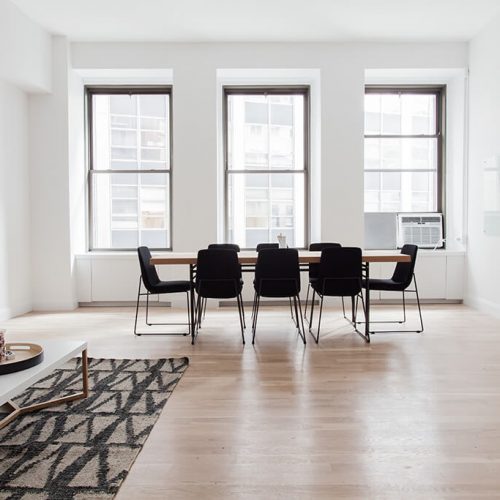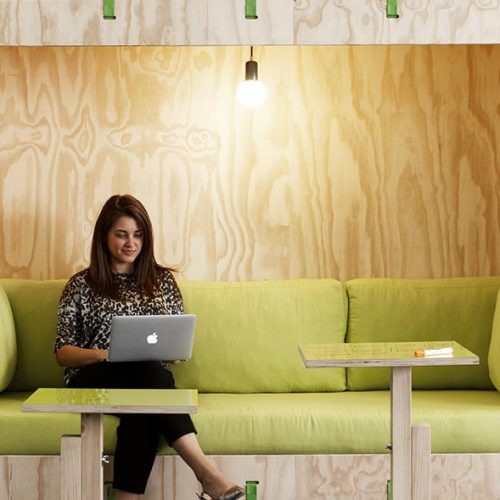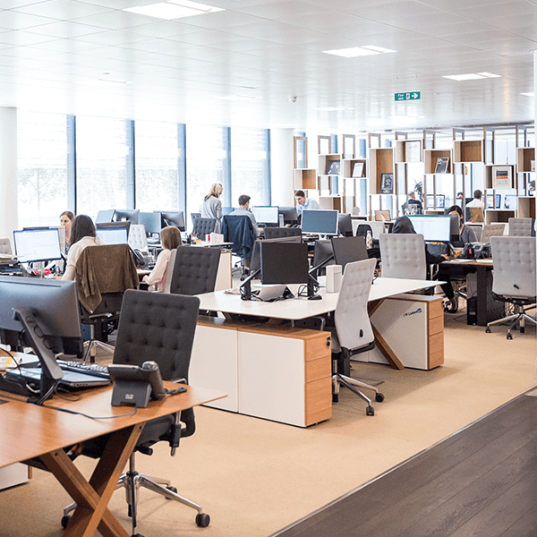
Does Workspace Density Still Matter?
- Reading Time: 6 minutes


Does Workspace Density Still Matter?
Without a doubt, our offices and workspaces have changed considerably over the years, and are continuing to evolve and change. Technology, in particular, is changing how we work and with the rapid change in our working habits, culture and lifestyles, it is more important than ever for business owners to carefully consider their workspace and commercial fit out design and ask themselves… Does workspace density still matter?
Understanding Workspace Density
Before even pondering whether the size of your workspace is relevant, we have to understand all facets of workspace density and the impacts it has on business.
What is Workspace Density? In simple terms, workspace density is the size and space allocated to work areas.
Long term trends in office and commercial fit outs have seen offices and workspaces become more compact with less and less space being allocated to each individual employee. Not only are the areas getting smaller but the desks and workstations are also shrinking.
This trend has been favoured by business owners in their quest to seek out more efficient and cost-effective office space. And it’s true, compact offices can often translate to reduced overheads and real estate costs. But is the push to save space and maintain a compact office actually resulting in a more cost-effective, efficient workspace?
While the average Australian office sits at around 8.4 to 13.9 square metres per desk, studies have shown worldwide that anything less than 5.6 square metres could be the tipping point that counteracts any cost-saving efforts. Simply put, the more employees squeezed into tighter spaces could result in decreased productivity, performance and overall employee happiness resulting in higher employee turnover.
And any business owner who has had to replace a high performing employee knows only too well how costly that can be.
When you look at workspace density from both sides of the equation… The business owner and the worker, it’s pretty clear that there are a lot more factors that come into play than simply adhering to the density numbers. The size of your space and how much you can fit in should take a back seat to functionality and productivity.


On the whole, when considering workspace density going forward, it’s not so much about how much you can fit in, but rather how can the space be better utilised to maximise performance.
A better balance of space that not only allows for a highly productive work environment but also greater flexibility for future business growth. A forward-thinking workspace design means your office space can flex and adapt as your business grows and scales without excessive overhead costs and the need to move premises in order to expand.
It also encourages both you and your design team to think deeper about the layout and space allocated for each activity and how your employee needs can be better accommodated. When it comes to employee productivity, bigger may not necessarily be better.
In fact, a recent article from workspace data firm Density, outlines the key factors important to employee productivity. Density spoke to industry expert Anja Jamrozik about the impact of workplace design on employee productivity, and Jamrozik outlines a simple “ABC” formula that encompasses all the components important in a workplace to maximise productivity. These components are:
Attention
The environment in which someone works can be both conductive and detrimental to productivity and the attention one gives to a task or activity. On one hand, a quiet space may help to stay focused but on the other hand, stuck in a drab and isolated room can lead to boredom and decreased activity. Providing a mix of spaces that accommodate varying work styles that require different levels of attention can be beneficial to maximise attention.
Behaviour
Human behaviour also plays a large part in our workplace, and the environment in which we work strongly influences our behaviour. How desks and workstations are laid out can impact productivity. The same can be said about the access employees have with other employees, particularly those who interact regularly. Even the facilities employees have available to them, break rooms, food and drink sources and the like can all impact employee behaviour. Allowing the opportunity for employees to take a break in a stimulating space can result in better creativity and higher productivity.
Comfort
Next to attention and behaviour, how comfortable employees are within the workplace usually has the most direct correlation to productivity. Privacy, temperature, lighting, access to office equipment and so on all play a part when it comes to the comfort of your employees. And, it’s here where workspace density and the amount of space your employees have to work in, is also factored in.
So, Does Workspace Density Still Matter?
Yes, and no! While workspace density data could be drawn on as a guide, there should be no hard and fast rule as to the space allocated for each employee and task. All businesses and spaces should be considered on their own merits in order to develop a balanced workspace design that is effective, efficient and most importantly, creates a positive user experience.
At the end of the day, the functionality of the space, the user experience and how effective the space is in enhancing workplace productivity are the most important factors to workspace design.
Contact us today and find out how we can optimise your workspace to increase productivity and employee experience.


